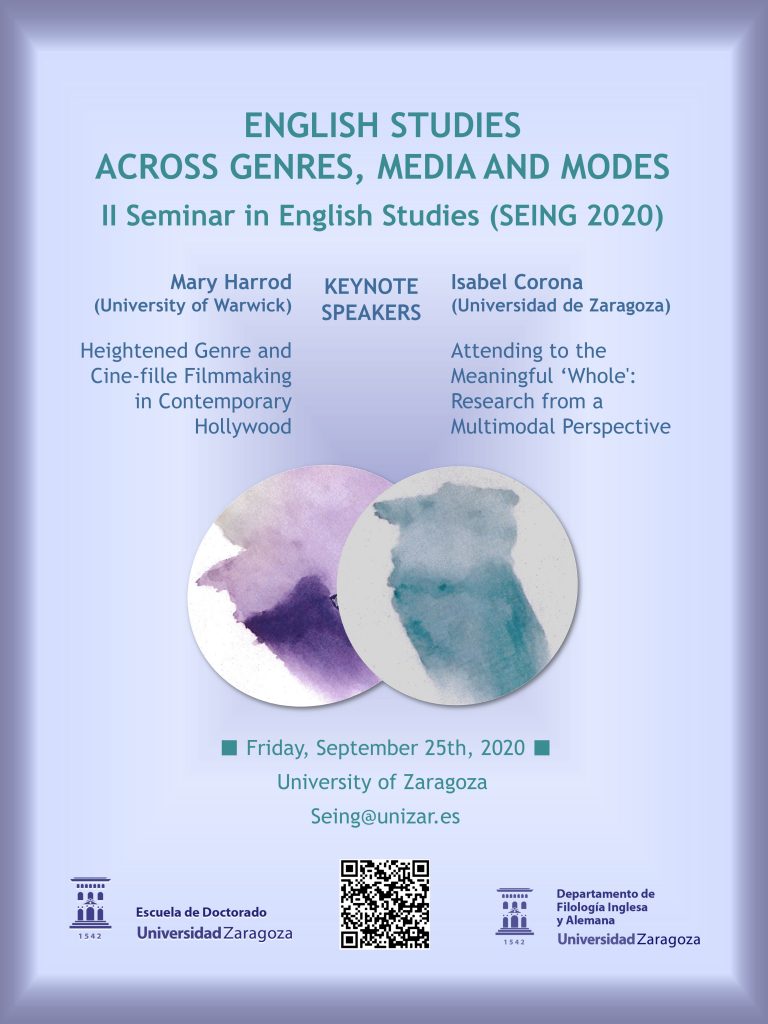Isabel Corona delivers an insightful plenary talk about multimodality at SEING II

Last Friday, September 25th, the second edition of the predoctoral seminar on English Studies (SEING II) was held online, gathering around 50 speakers and attendees. The event, organised at the Department of English and German Studies at the University of Zaragoza, was an opportunity for young researchers to introduce their doctoral projects and to share their current pieces of research. The motto of this year’s edition was ‘Research in English Studies Across Genres, Media and Modes’ and called for communications from the disciplines of literature, film studies, translation and linguistics that could explain how communication is developing these days in the different texts, formats and platforms that we frequently use.
Our InterGedi colleague, Isabel Corona, was one of the invited keynote speakers at SEING II, and gave a very dynamic talk about multimodality, showing how multimodal analyses could be undertaken from an encompassing, multidisciplinar perspective. The lecture started by outlining the key concepts and seminal works that paved the way for multimodal studies. Then, the focus moved towards how this analytical framework could help understand today’s communicative practices, also in digital environments. Pieces of Isabel’s latest results and implications about the notion of ‘newsworthiness’ in research project websites were shown and critically commented in order to see actual examples of multimodal research.
Overall, the SEING II seminar was a success and there was a lot of discussion about participants’ doctoral projects. It was great to see that research could be done and shared in these difficult times we are going through! From InterGedi, we already look forward to participating at the next edition.
Here below you can read the abstract of Isabel Corona’s plenary talk:
Attending to the Meaningful ‘Whole’: Research from a Multimodal Perspective
Multimodality is an emergent field of research that shifts from the traditional assumption that ways of communication considered as ‘verbal’ or ‘visual’ are to be studied separately. Multimodality takes the notion of ‘text’ as a combination of ways (modes) of communication that work — and are put to work — differently according to the context of situation and the ‘materiality’ (the medium) used.
In this presentation, I will approach this new field of study by trying to answer a number of questions: what is understood by multimodality? And what is a mode? Where does multimodality come from? What are the main theoretical concepts? Is there a single framework or ‘toolkit’ to be applied? What are the benefits — and the drawbacks — of doing multimodality? Can we just adopt multimodal research tools?
Addressing these questions will show the major challenges faced by researchers in multimodality. I will argue that the pervasiveness of multiple modes acting in combination in our contemporary communicational landscape calls for a fresh look at texts as ‘meaningful wholes’. To understand ‘texts’ (printed or digital), we need to understand multimodality.
